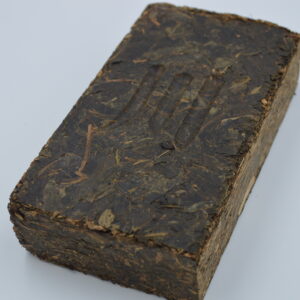Description
- dry tea is smooth brick shape, even thickness and clear texture, lustrous, bluish brown color
- reddish yellow color tea soup, clear and bright
- aged and pure, strong special Qing brick fragrances
- strong and thick, mellow and smooth tastes with sweet aftertaste, “aged rhyme”
- wet tea is dark brown
Introduction:
Lao Qing tea belongs to dark tea, also known as Qing brick tea, also known as Chuan 川 tea. It is mainly produced in Hubei Province, so it is also known as “Hubei Lao Qing tea”. Read More In the year of Qianlong (1736), Lei Zhongwan, a tea merchant, set up Yangloudong Tea House. The tea house was set up in Temples and began to make tea bricks. The main production of Qing brick tea is from Yangloudong, Hubei Province, also known as “Dong brick”. The Qing brick tea is printed with the “Chuan 川” trademark, also known as “Chuan tea”. Hubei has a long history of producing “Qing bricks”. In the 18th century, a stable and huge consumer group was cultivated in Europe. The source was Hankou, the port city of Hubei, which went through the northern part of China to the Mongolian Plateau, then to the camel road in the hinterland of Siberia, and then extended to the whole Europe (later replaced by water transportation and railway). In the second half of the 19th century, China’s tea exports accounted for 80% of the world’s total trade, while Hankou’s accounted for 60% of China’s domestic tea exports, and Lao Qing tea brick produced in Hubei accounted for the largest proportion. Tea Blog
Qing Brick 青砖 [qīng zhuān] is one kind of dark tea, fresh tea leaves of altitude 600-1200m mountains are used as raw materials, and then steamed and pressed at high temperature. Its producing area is mainly in the Yangtze Rive Valley of the south and southwest of Hubei Province, its origin of a 600 year history is the ancient Yangloudong town, Chibi, Hubei Province. A rectangular shape, a bluish brown color and a pure aroma are the typical characters of Qing Brick.
























